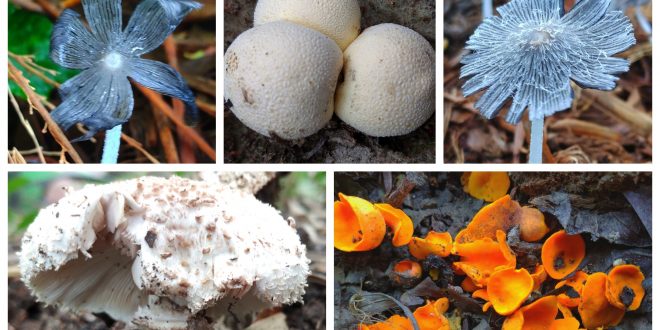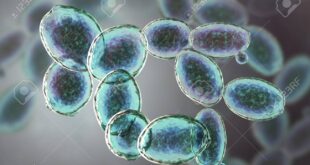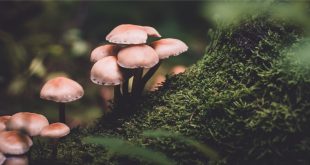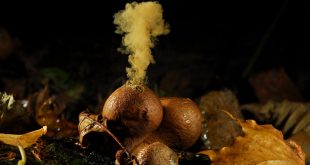Fungi {sing. fungus (L.) = sphongos (Gr.) – sponge} are a kingdom of usually multicellular, eucaryotic, spore-producing, achlorophyllous organisms with absorptive nutrition that generally reproduce both sexually and asexually and whose usually filamentous, branched somatic structures, known as hyphae, typically are surrounded by cell walls.
Currently, over 1.5 million species of fungi have been identified in different environments across the globe. Satisfactory environment for fungi is humidity, warmth, organic food rich shade or dark conditions.
Mycology is the study of fungi. The word “Mycology” is improperly coined term. In accordance with the principles of Greek grammar, the correct word is mycetology, in as much as the combining form of mykes is myceto.
Pier’ Antonio Micheli-“Father” or founder of modern mycology; An Italian botanist, included his studies on fungi in Nova Plantarum Genera, published in 1729.
Best safe and secure cloud storage with password protection
Get Envato Elements, Prime Video, Hotstar and Netflix For Free
Best Money Earning Website 100$ Day
#1 Top ranking article submission website
Fungi vs fungi
Not all “fungi” are members of the Kingdom Fungi. Fungi are polyphyletic organisms, i.e. more than one origin that the organisms traditionally referred to as fungi are not all closely related. Some characters and investigators have separated the Fungi (=the kingdom Fungi or Eumycota) from fungi to specify the term “Fungi” with a capital F specifically for the so-called true fungi that appear to be related to one another.
Characteristics
1. Thallus unicellular (yeast) and/or filamentous (dimorphic = both) or else amoeboid/plasmodial.
Plasmodium:
A naked multinucleate mass of protoplasm that moves and feeds in an amoeboid fashion such as the somatic phase called plasmodium.
Mycelium:
The mass of interwoven filamentous, branched structure (hyphae) that form the thallus of fungi or some bacteria (Streptomycelium) is called mycelium.
Mycelium consist of somatic (rhizomorphs, stroma and sclerotia) & reproductive structures plectenchyma: all organized fungal tissue (somatic & reproductive)
- Prosenchyma: Loosely woven hyphae, parallel in orientation.
- Pseudoparenchyma: Closely packed hyphae, more or less isodiametric.

Fig: Prosenchyma & Parenchyma; Source: Slideshare.net
2. Limited tissue differentiation and limited division of labor. A number of hypha forms the mycelium and a number of mycellium forms the thallus. A thallus can be septate or coenocytic.
3. Nuclear status
- Eukaryotic; uni, bi- or multinucleate (mono- or dikaryons);
- Nucleolus may be haploid, diploid (less frequent), homo- or heterokaryotic;
- Mitosis intranuclear (nuclear membrane doesn’t breakdown during mitosis, except for slime molds)
Centric & non-centric
Centric in flagellated forms; typical centrioles of euk’s; paired, cylinders of 9 triplets of microtublues.
Non-centric in non-flagellated forms; possess spindle pole bodies (SPBs); differ from centrioles in lacking microtubular component. Both centrioles & SPBs are associated with nuclear membrane.
4. Organelles: Typical eukaryotic assemblage of organelles; mitochondria, ER, dictyosome cisternae (= golgi apparatus), vacuoles, microbodies, microtubules, glycogen, etc. except plastid.
5. Cell wall: Well defined, typically chitin and β-glucans (fungal cellulose in some);
6. Nutrition: Heterotrophic, absorptive, produce extracellular enzymes
- Saprobes;
- Pathogens of plants, algae & other fungi;
- Symbionts.
The role fungi play in their immediate environment is governed by what extracellular enzymes they can produce.
7. Life cycle: Simple to complex; wide variety: Haplobiontic, Diplobiontic, Haplo-diplobiontic.
8. Sexuality: Sexual and/ or asexual reproduction, mono- or dioecious, homo- and heterothallic, Parasexuality.
- Mating systems: heterothallic only.
- Bipolar (unifactorial)- compatibility controlled by alleles of a single factor or locus.
- Tetrapolar (bifactorial)- compatibility controlled by alleles of two factors, or loci, located on two different chromosomes.
- Secondary homothallic (bifactorial system)- 2 nuclei with compatible mating types are incorporated into a single spore.
Asexual reproduction
- Arthrospores
- Chlamydospores
- Conidia
9. Sporocarps: Microscopic or macroscopic, limited tissue differentiation
10. Habitat: Ubiquitous
11. Studied by mycologists.
Animals, plants, and fungi are the three major multicellular groups of the domain Eukaryota. Eukaryotes are organisms with complex cells. Many fungi are superficially plant-like organisms. They grow visible structures that resemble plants or plant parts. The study of cladistics, however, results in a phylogeny tree in which fungi are more closely related to animals than to plants. In other words, animals have a more recent common ancestor with fungi than with plants.
Plant vs Fungi
| Plant | Fungi |
| Plants are eucaryotic autotrophs. | Fungi are eucaryotic heterotrophs. |
| Plants are the producers in any ecosystem. | Fungi are decomposers in any ecosystem. |
| Cell wall is made up of cellulose. | Their cell wall is made up of chitin. |
| They have definite cell walls. | Their cell walls may be septate or aseptate. |
| Plants reproduce with seeds. | They reproduce with spore. |
Animal vs fungi
| Animal | fungi |
| Animal cells lack cell wall. | Fungus has rigid cell wall. |
| Mode of nutrition is heterotrophic and holozoic. | Mode of nutrition is heterotrophic and absorptive. |
| All animals can move at least during some stage of their life cycle. | Fungus don’t move around. |
| Generally reproduce sexually, involves two individuals contributing genetic material to produce offspring. | Reproduce both sexually and asexually. Asexual spores include zoospores, conidia etc. |
| Comparatively simple life cycle. | Comparatively complex life cycle. |
References & Other Links
This Article is completely based on by the lecture of Sorwar Hossain, Lecturer, Department of Botany, University of Dhaka.
Author has added Some info and pictures.
- Introduction To Mycology by Alexopoulos.
Revised By
- Nusrat Jahan Nitu on 16 September 2021
 Plantlet The Blogging Platform of Department of Botany, University of Dhaka
Plantlet The Blogging Platform of Department of Botany, University of Dhaka






Informative one. I have changed some informations. Like what is plasmodium. Do check the article and if you didn’t like the changes you can change again <3<3